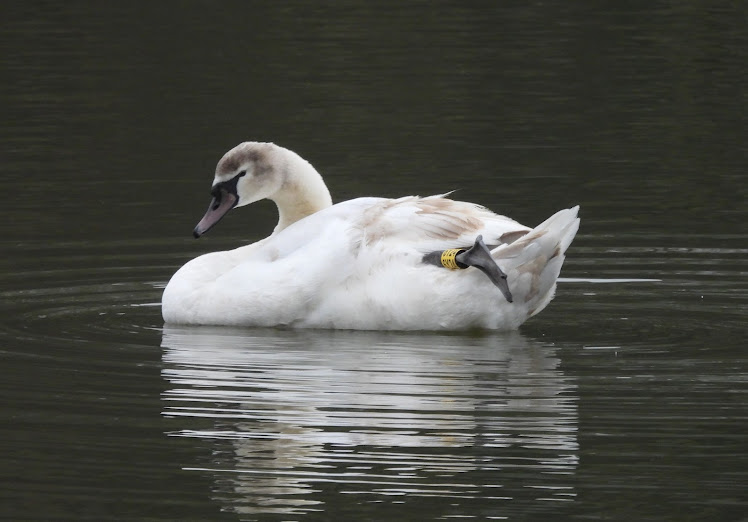Yesterday I blogged about 2 species of butterfly that I'd seen for the first time and mentioned that there was another species that I still had to identify. I put a picture of it on Ispot with a suggested name and sure enough someone else agreed, so I can now say that the species in question was a Purple Hairstreak.
Purple Hairstreak
Purple Hairstreak is a species that is associated with oak woodlands, so it's no real surprise that I found one at Linacre. Unfortunately though, they spend most of their lives high in the canopy and rarely come down to the ground, so I was very lucky to spot this tatty looking individual on the floor by the middle reservoir. It's not the best photo, as I had to be very quick, before it was scared away by a marauding dog that was running towards me at the time!
The next "new" species that I found this week was this moth. It's either a Copper Underwing (Amphipyra pyramidea) or a Svensson's Copper Underwing (Amphipyra berbera svenssoni). Unfortunately, the only way to tell the two species apart is to look at the amount of orange on the underside of the hindwing, something I didn't know, until later. Interestingly, this individual was found in the toilet block(!), but I also recorded several specimens in the bird boxes this year, so it appears to be quite a common species, whatever it is.
Copper or Svensson's Copper Underwing
Last up is this species of hoverfly that I found whilst looking for the butterflies. It doesn't have an English name, but goes by the latin name of Myathropa florea, and is the only member of this family of hoverfly in Britain. It is classed as "widespread and common" in my superb Hoverfly Identification guide. and the best way to identify it is to look at the pattern on its thorax, which is said to resemble the "Batman" logo. What do you think?
Myathropa florea




No comments:
Post a Comment